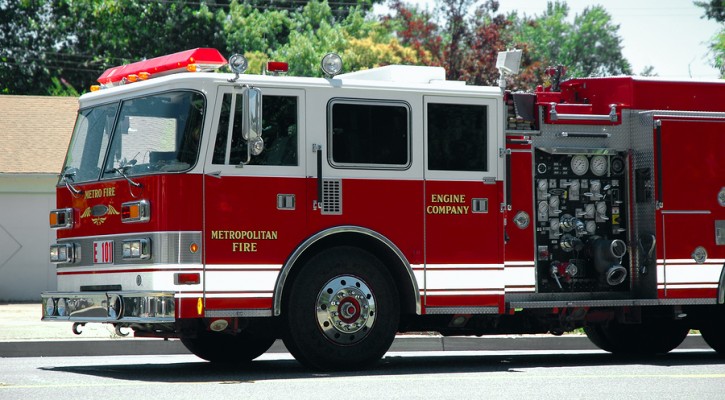Category Archive: Uncategorized

Traffic Deaths Declined To New Lows In 2013
December 24, 2014
Traffic deaths declined in 2013 by 3.1 percent over the previous year according to the National Highway Transportation Safety Administration (NHTSA). The 32,719 highway deaths in 2013 represents the lowest number of highway deaths since recording began in 1975. Traffic injuries also declined by 2.1 percent. Continue Reading

Waze App Cuts Commute Times; Endangers Communities
December 22, 2014
The Waze app is proving to be popular among commuters for shortening commute times but it’s proving to be extremely unpopular among residents who live in neighborhoods through which the commuter traffic is routed. Continue Reading

Decoy Used To Enforce Move Over Law
November 18, 2014
Police in Woodbridge New Jersey recently used a decoy fire truck to enforce that state’s Move Over Law. In spite of the fact that a large fire truck with its emergency lights flashing was posted on the road’s shoulder, many motorists paid no heed and refused to slow down or move to the far lane.
The first Move Over Law in the US was enacted in 1996 and, as of 2012, all 50 states have some form of Move Over Law that requires motorists to move over into the opposite lane or, if they can’t move over, to slow down when they encounter emergency vehicles on the side of the road. In spite of the law, according to estimates, law enforcement officers are killed by the side of the road at a rate of one per month and approximately five firefighters per year are killed. Surprisingly, tow truck operators are killed at an even greater rate.
New Jersey’s law was enacted in 2009 and requires that motorists who can’t move over into the opposite lane slow “to a reasonable and proper speed for the existing road and traffic conditions, which speed shall be less than the posted speed limit, and be prepared to stop.” The law not only includes police and fire vehicles but also tow trucks, highway maintenance, and service vehicles that are displaying emergency flashing lights.
This year, Florida amended its Move Over Law to include garbage/sanitation trucks and utility (gas, electric, water) vehicles in addition to police, fire, and tow trucks. Under Florida’s law, motorists who can’t move over are required to slow down at least 20 mph under the posted speed limit.
Enforcement or Entrapment?
In planning for the use of the fire truck decoy, Woodbridge police set up rules:
- A Move Over Law education program using billboards began on the routes in question several months before the start of the enforcement program.
- The fire truck was placed on on a straight section of road where a traffic light before the fire truck provided a natural break in traffic.
- Officers had to verify vehicle speed with a laser gun.
- Only vehicles that had a clear break in traffic to safely move over or slow down were monitored.
Fortunately, the majority of motorists that were monitored did slow down or move over. Unfortunately for some, the only way to get their attention is by issuing a traffic ticket. The first driver cited for failure to obey the law was traveling at 62 mph and made no effort to move over or slow down.
With the holidays approaching and the roads filled with travelers and shoppers, emergency personnel will be out on the roads in force. Protect the ones that protect you by obeying the Move Over law. Read more: Police use ‘decoy’ firetruck to educate drivers on Move Over law

Ask The Traffic School Instructor: Backing Out Of A Parking Spot
November 12, 2014
Question: I was backing out of a parking spot and couldn’t see due to a large van parked next to me. Even though I was backing very slowly and carefully, I was hit by another car. Who’s at fault in this crash?
Answer: Technically, the driver who will be held at fault in a situation like this will be the driver who is backing out of the parking spot.
In looking at the Florida Statutes, the law simply says “The driver of a vehicle shall not back the same unless such movement can be made with safety and without interfering with other traffic.” That puts the responsibility of preventing a crash on the shoulders of the person backing out of the parking spot.
However, that being said, the true blame can probably be equally shared among the two drivers. Florida law also says the law doesn’t relieve anyone “from the duty to drive with due regard for the safety of all persons, nor shall such provisions protect the driver from the consequences of his or her reckless disregard for the safety of others.”
If the other driver was driving too fast or not paying attention, he or she shares in the blame. When driving in a parking lot, drivers should drive slowly, be on the lookout for anyone who may back out in front of them, and be prepared to stop quickly to avoid a crash. Even though the other driver may share in the blame, the person backing out will probably be the only one to get a ticket for failure to use due caution.
Remember that no one has the right-of-way. The law only tries to determine who should have yielded the right-of-way to another driver. The person backing out should yield the right-of-way to the drivers in the travel lanes but those drivers in the travel lanes should also be prepared to yield to prevent a crash.

First Snow Of The Year
October 31, 2014
Oddly enough, the first snow of the year is forecast for this Halloween weekend throughout the mountain areas of the Southeastern US. Weather forecasts call for the possibility of as much as eight to twelve inches in the higher elevations along the Tennessee/North Carolina border and one to three inches in Asheville NC.
Forecasters call for rain in these regions that will turn to snow as the temperatures start to fall. Hopefully, these areas won’t experience the crippling driving conditions that Atlanta experienced last January.
You may remember the headlines from earlier this year when hundreds of thousands of drivers in Atlanta were released from work and hit the road at the same time. Many never made it home and vehicles were left abandoned on Atlanta roads for days afterwards. A lot of people up north gave Atlanta residents a hard time for their inability to deal with what seemed to be only a couple of inches of snow but they didn’t get the whole picture.
That morning in Atlanta, as the snow began to fall, the roadways were still relatively warm causing the snow to melt as it hit the roadways. As temperatures started to plunge, that layer of melted snow turned to a sheet of ice that was later covered with a layer of snow. It was the solid sheet of ice that caused the problems, not the snow!
After Denver and Phoenix, Atlanta, located in the foothills of the Appalachian Mountains at over 1,000 feet, is the third highest major city in the US. Metro Atlanta’s topography consists of high hills and deep ravines and, when any one of Metro Atlanta’s 5.5 million residents pull out of their driveway, they will be headed either up or downhill.
It wasn’t the snow that caused the problems in Atlanta but hundreds of thousands of vehicles trying to make it up and down those high, ice coated hills. It was a nightmare that few cities in a similar situation would be able to cope with.
Drivers who aren’t used to driving in snow need to use extreme caution if they attempt to go out in the snow this weekend. Most driver manuals in states that have a lot of snow and ice offer these driving rules for coping with wintry driving conditions. When driving on:
- Wet roads: Slow down 5 to 10 mph.
- Packed snow: Slow down to half speed.
- Ice: Slow to a crawl.
In addition to watching your speed, you should at least double the following distance between you and the vehicle ahead.
Know what type of brakes you have. If you have standard brakes, don’t slam on your brakes when driving on snow or ice; instead, lightly pump your brakes to slow the vehicle. If you have anti-lock brakes, apply firm pressure to the brake pedal.
If you start to skid, turn your wheel in the direction of the skid and don’t concentrate on looking at the hazards to the sides. Keep your eyes on where you want the vehicle to go and make steering adjustments to steer in that direction.
Be aware that snow tires don’t work well on ice.
This is a perfect training opportunity for your teen driver but you should limit their driving to no further than the end of the street at very low speeds. It should be quite an eye opening experience for your teen. Be prepared however for the possibility that your teen may take out a mailbox or two. It’s far better for your teen to learn under controlled conditions like this than to experience it for the first time on their own after they get their operator’s license.
